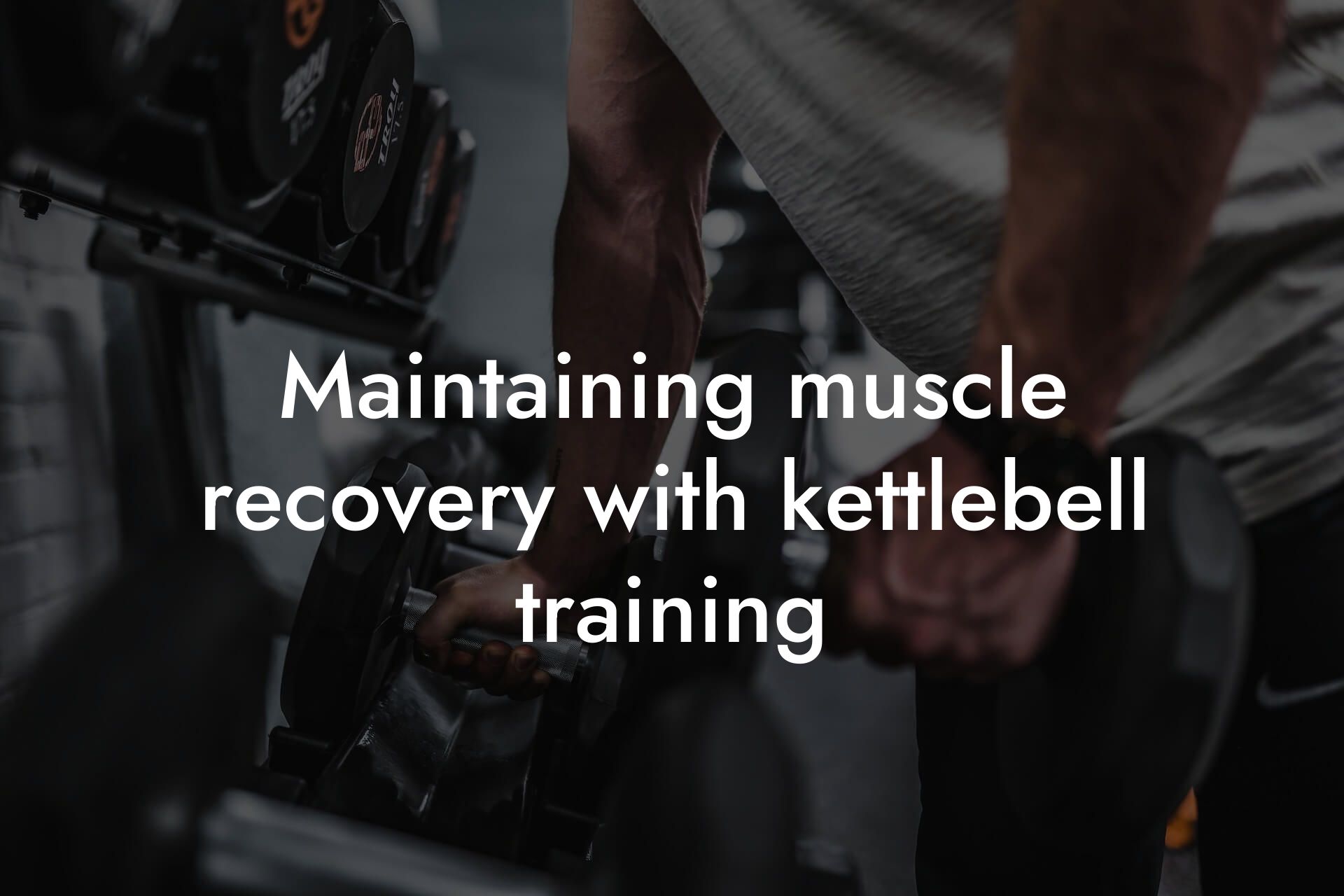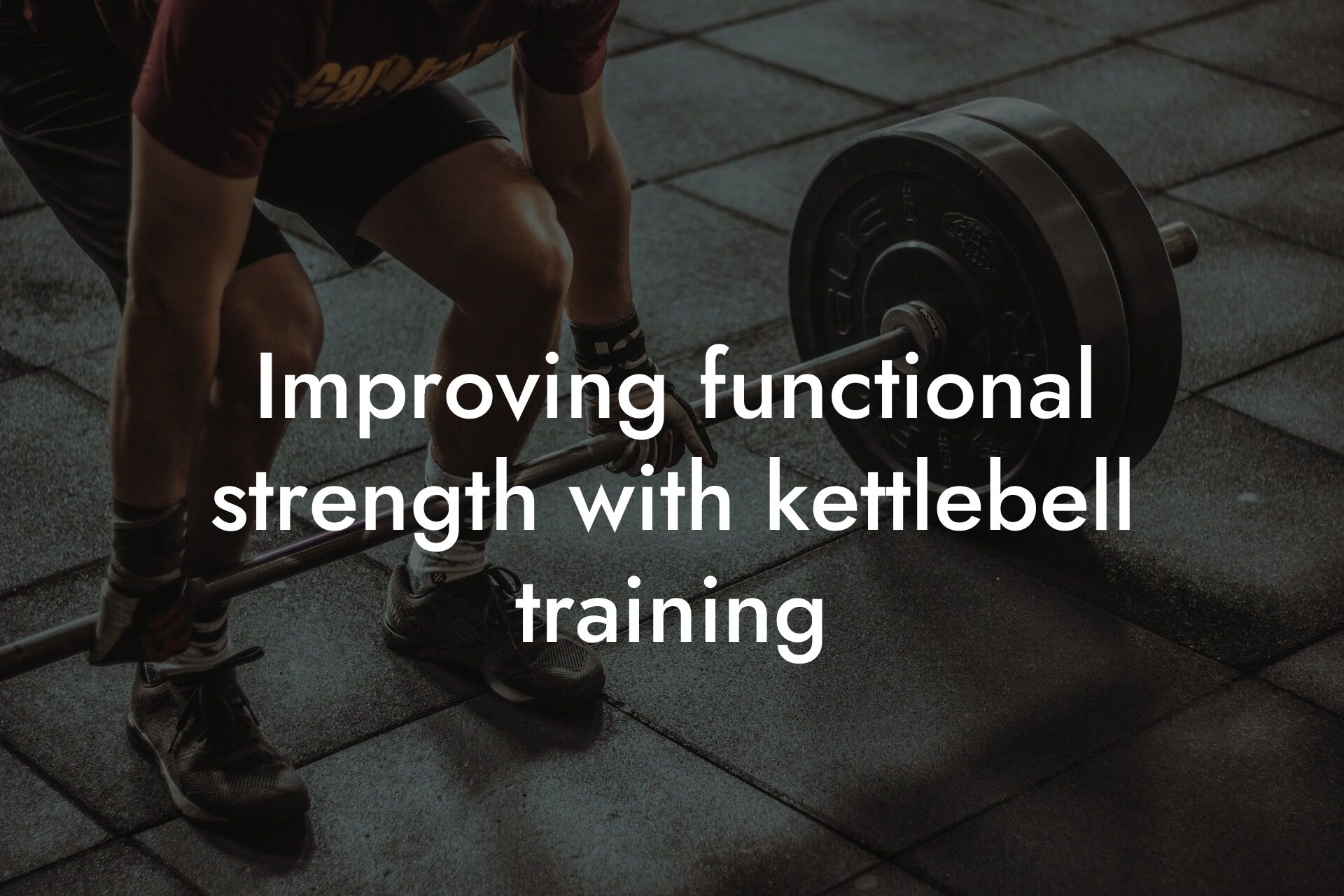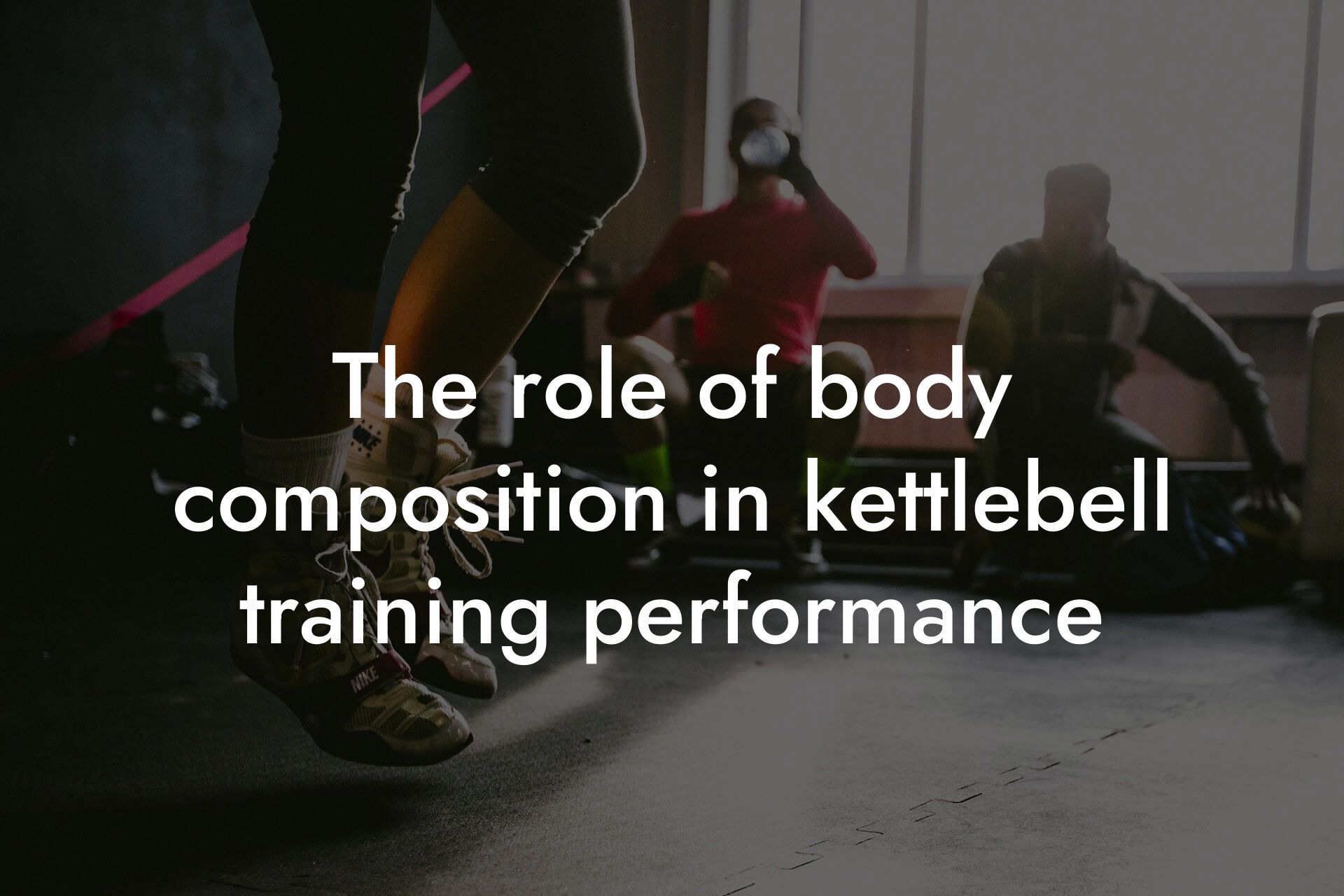As a high-earning professional, you understand the importance of maintaining a healthy and fit physique. Regular exercise, such as kettlebell training, is an excellent way to achieve this goal. However, it's essential to consider the impact of exercise on your overall health, particularly when it comes to bone density. In this article, we'll delve into the significance of bone density in kettlebell fitness and provide you with the information you need to take your physical performance to the next level.
Table of Contents
- What is Bone Density?
- Why is Bone Density Important in Kettlebell Fitness?
- The Benefits of High Bone Density in Kettlebell Fitness
- The Risks of Low Bone Density in Kettlebell Fitness
- How to Improve Bone Density through Kettlebell Training
- How DEXA Scans Can Help Optimize Your Kettlebell Training
- Frequently Asked Questions
What is Bone Density?
Bone density refers to the measure of how dense and strong your bones are. It's a critical aspect of overall health, as it determines your risk of osteoporosis, fractures, and osteopenia. Bone density is typically measured using a DEXA (Dual-Energy X-ray Absorptiometry) scan, which provides a detailed analysis of your bone health.
Why is Bone Density Important in Kettlebell Fitness?
Kettlebell training is a high-impact activity that can put significant stress on your bones. While this stress can help improve bone density, it can also lead to bone loss and increased risk of injury if not managed properly. Maintaining optimal bone density is crucial for kettlebell enthusiasts, as it enables you to perform exercises with confidence, reduces the risk of fractures, and supports overall musculoskeletal health.
The Benefits of High Bone Density in Kettlebell Fitness
Having high bone density offers several benefits for kettlebell enthusiasts, including:
- Improved athletic performance: Stronger bones enable you to lift heavier weights, perform more complex exercises, and recover faster from intense training sessions.
- Reduced risk of injury: High bone density reduces the risk of fractures, osteoporosis, and other bone-related injuries, allowing you to train with confidence and consistency.
- Enhanced overall health: Good bone density is linked to better overall health, including reduced risk of chronic diseases, improved posture, and enhanced mobility.
The Risks of Low Bone Density in Kettlebell Fitness
On the other hand, low bone density can have severe consequences for kettlebell enthusiasts, including:
- Increased risk of injury: Weak bones are more prone to fractures, osteoporosis, and other bone-related injuries, which can lead to prolonged recovery periods and reduced training intensity.
- Decreased athletic performance: Low bone density can limit your ability to lift heavy weights, perform complex exercises, and recover from intense training sessions.
- Long-term health consequences: Poor bone density is linked to increased risk of chronic diseases, such as osteoporosis, and can have a significant impact on your overall quality of life.
How to Improve Bone Density through Kettlebell Training
The good news is that kettlebell training can help improve bone density, but it's essential to do it correctly. Here are some tips to get you started:
- Incorporate weight-bearing exercises: Focus on exercises that involve weight-bearing activities, such as squats, deadlifts, and snatches, which help stimulate bone growth and density.
- Use progressive overload: Gradually increase the weight or intensity of your workouts to challenge your bones and stimulate growth.
- Incorporate high-impact exercises: High-impact exercises, such as jump squats and box jumps, can help improve bone density by stimulating osteogenesis (bone growth).
- Focus on proper form and technique: Poor form and technique can put unnecessary stress on your bones, leading to injury and decreased bone density. Ensure you're performing exercises correctly to maximize the benefits.
How DEXA Scans Can Help Optimize Your Kettlebell Training
DEXA scans provide a comprehensive analysis of your bone health, enabling you to:
- Identify areas for improvement: DEXA scans help identify areas of low bone density, allowing you to target specific exercises and training protocols to improve bone health.
- Track progress: Regular DEXA scans enable you to track changes in bone density over time, ensuring your training is effective and making adjustments as needed.
- Optimize training protocols: DEXA scans provide valuable insights into your bone health, allowing you to tailor your training protocols to meet your specific needs and goals.
Maintaining optimal bone density is crucial for kettlebell enthusiasts, as it enables you to perform exercises with confidence, reduces the risk of injury, and supports overall musculoskeletal health. By incorporating weight-bearing exercises, progressive overload, high-impact exercises, and proper form and technique into your training, you can improve bone density and take your kettlebell fitness to the next level. Additionally, regular DEXA scans can help you track progress, identify areas for improvement, and optimize your training protocols. At Tano Performance Group, we're committed to helping high-earning professionals like you achieve their fitness goals and maintain optimal bone health. Contact us today to learn more about our DEXA scan services and how we can help you take your physical performance to new heights.
Frequently Asked Questions
What is bone density, and why is it important for kettlebell fitness?
Bone density refers to the measure of how dense and strong your bones are. It's essential for kettlebell fitness because kettlebells involve weight-bearing exercises that can help improve bone density, reducing the risk of osteoporosis and fractures. As you age, your bone density naturally decreases, making it crucial to incorporate exercises that promote bone growth and strength.
How does kettlebell training impact bone density?
Kettlebell training is a weight-bearing exercise that helps stimulate bone growth and increase bone density. The dynamic movements and heavy loads used in kettlebell exercises, such as swings and squats, help to strengthen bones and promote osteogenesis (the growth of new bone tissue).
What are the benefits of improving bone density through kettlebell training?
Improving bone density through kettlebell training can reduce the risk of osteoporosis, fractures, and osteopenia. It can also improve overall bone health, increase muscle mass and strength, and enhance athletic performance. Additionally, strong bones can help prevent injuries and improve overall physical function.
Who can benefit from kettlebell training for bone density?
Anyone can benefit from kettlebell training for bone density, regardless of age or fitness level. However, it's particularly beneficial for individuals who are at risk of osteoporosis or have a family history of the condition, such as postmenopausal women, older adults, and those with a sedentary lifestyle.
How often should I incorporate kettlebell training into my workout routine to improve bone density?
Aim to incorporate kettlebell training into your workout routine at least 2-3 times per week, with a minimum of 2-3 sets per exercise. As you progress, you can increase the frequency and intensity of your workouts to continue challenging your bones and promoting growth.
What are some kettlebell exercises that are particularly effective for improving bone density?
Exercises that involve heavy loads, dynamic movements, and multiple planes of motion are particularly effective for improving bone density. Some examples include kettlebell swings, squats, deadlifts, cleans, and snatches. These exercises help to stimulate bone growth and strengthen the muscles and connective tissues surrounding the bones.
How long does it take to see improvements in bone density through kettlebell training?
Improvements in bone density through kettlebell training can be seen in as little as 6-12 weeks, depending on the frequency, intensity, and consistency of your workouts. However, it's essential to remember that bone density improvements are a long-term process and require ongoing commitment to your training program.
Are there any specific nutrients or supplements that can help support bone density improvements through kettlebell training?
Yes, certain nutrients and supplements can help support bone density improvements through kettlebell training. These include calcium, vitamin D, magnesium, and protein. Additionally, omega-3 fatty acids, vitamin K, and collagen supplements may also be beneficial for bone health.
Can kettlebell training help improve bone density in older adults?
Absolutely! Kettlebell training is an excellent way for older adults to improve bone density, reduce the risk of falls and fractures, and enhance overall physical function. Modified exercises and lighter weights can be used to accommodate physical limitations and ensure safety.
How does kettlebell training compare to other forms of exercise for improving bone density?
Kettlebell training is a highly effective way to improve bone density due to its dynamic movements, heavy loads, and multi-planar exercises. While other forms of exercise, such as weightlifting and bodyweight exercises, can also be beneficial, kettlebell training offers a unique combination of strength, power, and mobility training that can be particularly effective for bone density improvements.
Can I use kettlebell training to improve bone density if I have a pre-existing condition or injury?
It's essential to consult with a healthcare professional or certified trainer before starting a kettlebell training program, especially if you have a pre-existing condition or injury. They can help you modify exercises and develop a safe and effective training program that meets your individual needs.
How does kettlebell training impact bone density in women, particularly postmenopausal women?
Kettlebell training can be particularly beneficial for postmenopausal women, who are at a higher risk of osteoporosis and fractures. The weight-bearing exercises and dynamic movements involved in kettlebell training can help stimulate bone growth and reduce the risk of osteoporosis.
Can kettlebell training help improve bone density in individuals with osteopenia or osteoporosis?
Yes, kettlebell training can be an effective way to improve bone density in individuals with osteopenia or osteoporosis. However, it's essential to work with a healthcare professional or certified trainer to develop a safe and effective training program that takes into account any physical limitations or contraindications.
How does kettlebell training impact bone density in individuals with a history of fractures or osteoporosis?
Kettlebell training can be an effective way to improve bone density in individuals with a history of fractures or osteoporosis. However, it's essential to start slowly, progress gradually, and focus on exercises that promote strength, stability, and mobility.
Can kettlebell training help improve bone density in athletes or individuals who engage in high-impact sports?
Yes, kettlebell training can be an effective way to improve bone density in athletes or individuals who engage in high-impact sports. The dynamic movements and weight-bearing exercises involved in kettlebell training can help strengthen bones and reduce the risk of injuries.
How does kettlebell training impact bone density in individuals with a sedentary lifestyle?
Kettlebell training can be an effective way to improve bone density in individuals with a sedentary lifestyle. The weight-bearing exercises and dynamic movements involved in kettlebell training can help stimulate bone growth and reduce the risk of osteoporosis.
Can kettlebell training help improve bone density in individuals with a family history of osteoporosis?
Yes, kettlebell training can be an effective way to improve bone density in individuals with a family history of osteoporosis. The weight-bearing exercises and dynamic movements involved in kettlebell training can help stimulate bone growth and reduce the risk of osteoporosis.
How does kettlebell training impact bone density in individuals with a history of bone cancer or bone disease?
Kettlebell training can be an effective way to improve bone density in individuals with a history of bone cancer or bone disease. However, it's essential to work with a healthcare professional or certified trainer to develop a safe and effective training program that takes into account any physical limitations or contraindications.
Can kettlebell training help improve bone density in individuals with a history of joint replacements or orthopedic surgeries?
Yes, kettlebell training can be an effective way to improve bone density in individuals with a history of joint replacements or orthopedic surgeries. However, it's essential to start slowly, progress gradually, and focus on exercises that promote strength, stability, and mobility.
How does kettlebell training impact bone density in individuals with a history of spinal cord injuries or neurological conditions?
Kettlebell training can be an effective way to improve bone density in individuals with a history of spinal cord injuries or neurological conditions. However, it's essential to work with a healthcare professional or certified trainer to develop a safe and effective training program that takes into account any physical limitations or contraindications.
Can kettlebell training help improve bone density in individuals with a history of autoimmune disorders or chronic illnesses?
Yes, kettlebell training can be an effective way to improve bone density in individuals with a history of autoimmune disorders or chronic illnesses. However, it's essential to work with a healthcare professional or certified trainer to develop a safe and effective training program that takes into account any physical limitations or contraindications.
Here are some related articles you might love...
- Maintaining muscle recovery with kettlebell training
- Improving functional strength with kettlebell training
- The role of body composition in kettlebell training performance
- Reducing body fat for better kettlebell workout results
- Nutrition strategies for kettlebell enthusiasts
- Strength training tips specific to kettlebell exercises
- Balancing strength, speed, and flexibility in kettlebell workouts
- How DEXA scans can benefit kettlebell training athletes
Zak Faulkner
Zak Faulkner is a leading authority in the realm of physical health and body composition analysis, with over 15 years of experience helping professionals optimise their fitness and well-being. As one the experts behind Tano Performance Group, Zak has dedicated his career to providing in-depth, science-backed insights that empower clients to elevate their physical performance and overall health.
With extensive knowledge of DEXA technology, Zak specializes in delivering comprehensive body assessments that offer precise data on body fat, muscle mass, bone density, and overall physique. His expertise enables individuals to make informed decisions and achieve their fitness goals with accuracy and confidence. Zak’s approach is rooted in a deep understanding of human physiology, combined with a passion for helping clients unlock their full potential through personalised strategies.
Over the years, Zak has earned a reputation for his commitment to excellence, precision, and client-focused service. His guidance is trusted by top professionals who demand the best when it comes to their health. Whether advising on fitness programs, nutritional strategies, or long-term wellness plans, Zak Faulkner’s insights are a valuable resource for anyone serious about taking their health and fitness to the next level.
At Tano Performance Group, Zak continues to lead our Content Team revolutionising how professionals approach their physical health, offering unparalleled expertise that drives real results.




